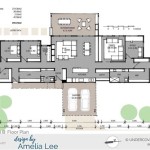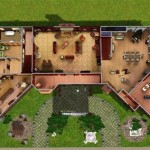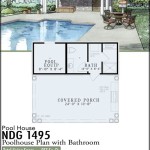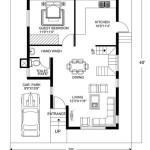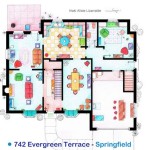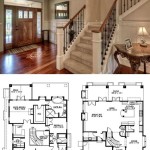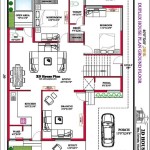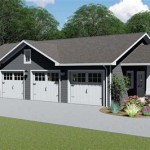20x30 House Plans West Facing: Optimizing Design for Light and Comfort
A west-facing house presents unique opportunities and challenges for homeowners. The abundance of afternoon and evening sunlight can be both a blessing and a curse, requiring careful planning to maximize benefits and mitigate drawbacks. A 20x30 house plan, with its relatively compact footprint, provides a manageable space to implement design strategies that effectively address the specifics of a west-facing orientation.
One primary consideration for a west-facing 20x30 house is managing heat gain. The afternoon sun, particularly during warmer months, can significantly increase indoor temperatures. Strategic placement of windows and thoughtful landscaping can help regulate this. Deciduous trees planted on the west side of the property can provide shade during the summer while allowing sunlight to penetrate during the winter when their leaves have fallen. Overhangs, awnings, and exterior shutters can also be incorporated into the design to control the amount of sunlight entering the home.
Window selection plays a crucial role in energy efficiency and comfort. West-facing windows should be energy-efficient, utilizing features like low-E coatings and insulated frames to minimize heat transfer. Consider using smaller windows on the west side or grouping them together on a single wall to reduce the overall surface area exposed to direct sunlight. Alternatively, clerestory windows, placed high on the wall, can introduce natural light without excessive heat gain.
Interior layout optimization is essential in a west-facing 20x30 house plan. Positioning less frequently used rooms, such as storage areas or bathrooms, on the west side can help buffer the living spaces from the intense afternoon sun. Bedrooms, particularly those used primarily for sleeping, can also be situated on the west side, provided adequate window treatments are used to block light and heat during the daytime.
Living areas, kitchens, and dining spaces can be oriented towards the east or north to benefit from cooler morning light and minimize exposure to the harsh afternoon sun. This arrangement creates a more comfortable environment for daily activities and reduces the need for artificial lighting during the day.
Ventilation is another important factor to consider in a west-facing home. Cross-ventilation, achieved by strategically placing windows and doors, can help draw cooler air through the house and expel hot air. Ceiling fans can further enhance air circulation and improve comfort levels, especially during the warmer months.
Exterior wall materials and colors can also influence the amount of heat absorbed by the house. Lighter-colored exterior walls reflect more sunlight and heat compared to darker colors, which absorb more. Using materials with high thermal mass, such as brick or concrete, can help regulate indoor temperatures by absorbing heat during the day and releasing it slowly at night.
Landscaping beyond tree placement can contribute to a more comfortable environment. Creating a shaded patio or deck on the west side of the house provides an outdoor living space shielded from the direct afternoon sun. Planting shrubs and groundcover around the foundation can also help insulate the house and reduce heat gain.
The roof design can impact the overall energy efficiency of a west-facing 20x30 house. A light-colored roof reflects more sunlight and heat compared to a dark-colored roof. Consider using roofing materials with high reflectivity and thermal resistance to minimize heat transfer into the attic space.
Incorporating passive cooling strategies can further reduce the reliance on air conditioning. These strategies can include features like thermal chimneys, which utilize natural convection to draw hot air out of the house, and earth sheltering, which utilizes the stable temperature of the earth to moderate indoor temperatures.
When designing a west-facing 20x30 house, consulting with an experienced architect or building designer is highly recommended. They can provide valuable insights and expertise in optimizing the design for the specific climate, site conditions, and homeowner needs. A well-designed west-facing home can be both comfortable and energy-efficient, taking full advantage of the natural light while mitigating the potential drawbacks of the western sun.
Careful consideration of these design elements can transform a potential challenge into a distinct advantage, creating a comfortable and energy-efficient living space that harnesses the natural light and warmth of the west-facing orientation.

30x50 Feet 1500 Sqft West Facing Corner House Design With Vastu 165 Gaj 9x15 Mtr Id 097

20 50 House Plan With Car Parking North Facing South And West

20 50 House Plan With Car Parking North Facing South And West

27 X 40 Feet House Plan Design No 215

35x60 House Plan 35 60 Home Design By 2100 Sqft Ghar Naksha

30 X 36 House Design Ii Ghar Ka Naksha Plan

18 X 50 House Plan Ii Ghar Ka Naksha 900 Sqft Design

Granny Flat 2 Bedroom Home Plan 111 Sbhlh 100 M2 1070 Sq Foot Concept House Plans For

35x60 House Plan 35 60 Home Design By 2100 Sqft Ghar Naksha

35x60 House Plan 35 60 Home Design By 2100 Sqft Ghar Naksha

